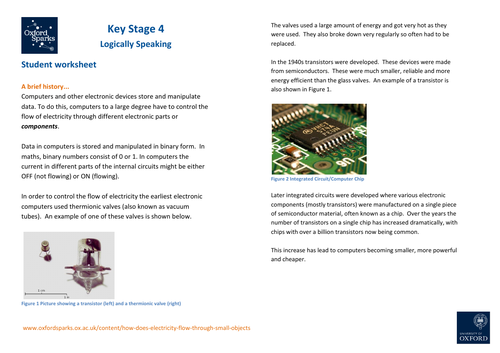




Currently, electronic switches in the form of transistors and diodes are the building blocks for computers and other electronic devices. Scientists at the University of Oxford are researching how electricity flows in nanoscale electronics. In the future it may be possible to create electronic switches that are based on individual molecules.
In this lesson students find out a bit more about the development of electronic components over the years and are introduced to logic gates and truth tables.
Learning outcomes:
- Students are able to recall that computers are made up of components that have become smaller and more efficient over time.
- Students are able to predict the outputs of basic logic gates given specific inputs.
- Students are able to create and interpret truth tables for simple logic gates.
See more at: www.oxfordsparks.ox.ac.uk/content/how-does-electricity-flow-through-small-objects
Something went wrong, please try again later.
This resource hasn't been reviewed yet
To ensure quality for our reviews, only customers who have downloaded this resource can review it
Report this resourceto let us know if it violates our terms and conditions.
Our customer service team will review your report and will be in touch.